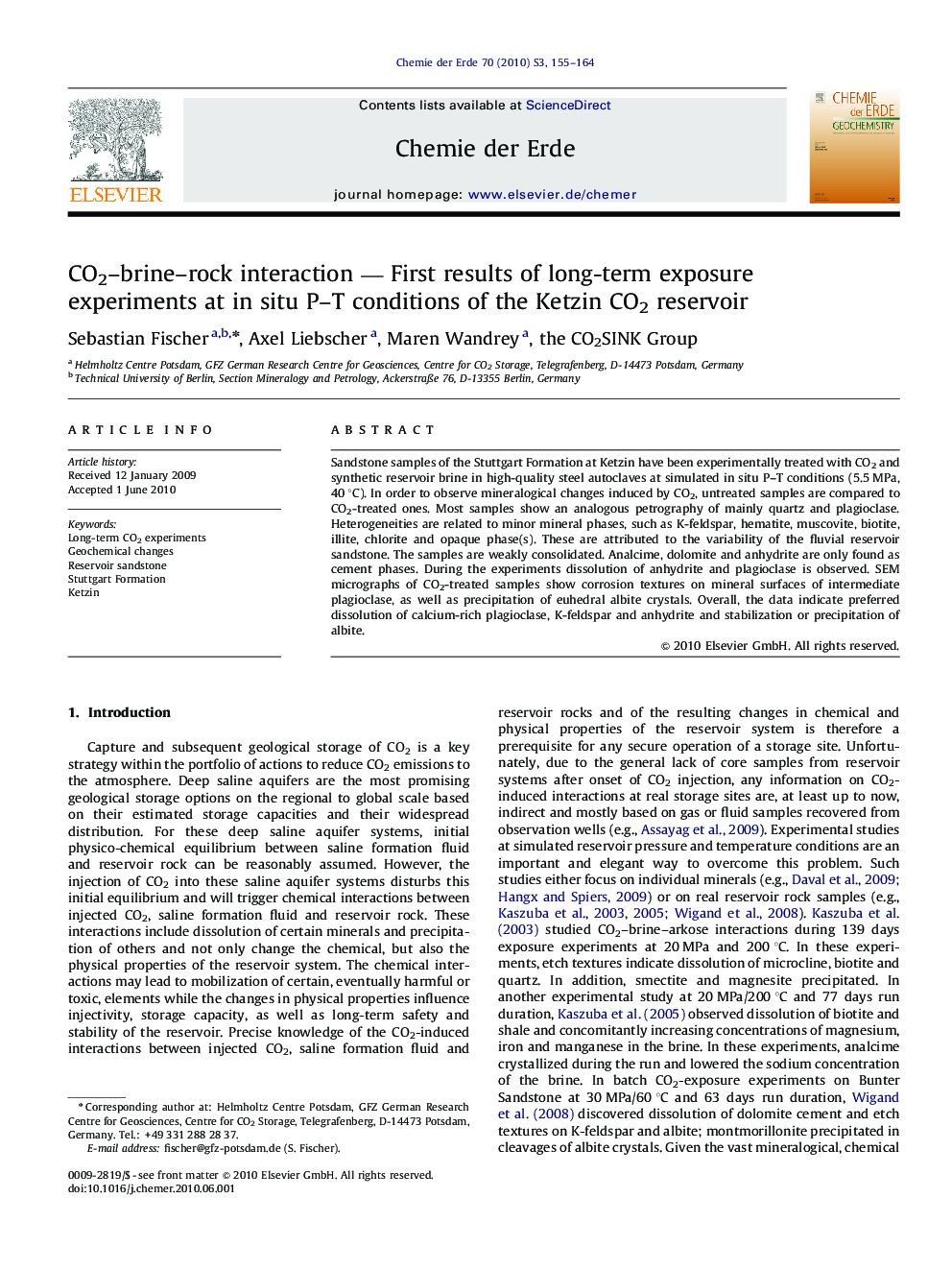| Article ID | Journal | Published Year | Pages | File Type |
|---|---|---|---|---|
| 4407110 | Chemie der Erde - Geochemistry | 2010 | 10 Pages |
Sandstone samples of the Stuttgart Formation at Ketzin have been experimentally treated with CO2 and synthetic reservoir brine in high-quality steel autoclaves at simulated in situ P–T conditions (5.5 MPa, 40 °C). In order to observe mineralogical changes induced by CO2, untreated samples are compared to CO2-treated ones. Most samples show an analogous petrography of mainly quartz and plagioclase. Heterogeneities are related to minor mineral phases, such as K-feldspar, hematite, muscovite, biotite, illite, chlorite and opaque phase(s). These are attributed to the variability of the fluvial reservoir sandstone. The samples are weakly consolidated. Analcime, dolomite and anhydrite are only found as cement phases. During the experiments dissolution of anhydrite and plagioclase is observed. SEM micrographs of CO2-treated samples show corrosion textures on mineral surfaces of intermediate plagioclase, as well as precipitation of euhedral albite crystals. Overall, the data indicate preferred dissolution of calcium-rich plagioclase, K-feldspar and anhydrite and stabilization or precipitation of albite.
